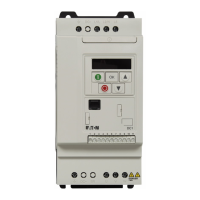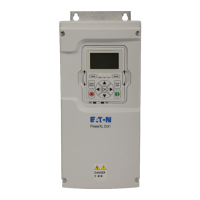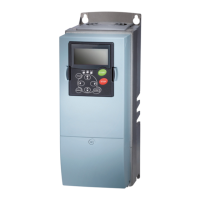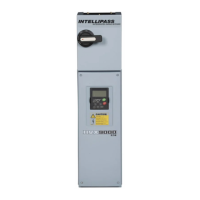2 Engineering
2.9 Three-phase motor
56 DA1 Variable Frequency Drives 11/16 MN04020005Z-EN www.eaton.com
2.9.3 Connecting Motors in Parallel
When in V/Hz control mode (default setting, P4-01 = 2), DA1 variable
frequency drives can be used to run multiple motors simultaneously.
Connecting motors in parallel reduces the load resistance at the variable
frequency drive output. The total stator inductance will be reduced and the
cables’ stray capacitance will be increased. The result will be greater
harmonic distortion when compared to a single-motor connection. A motor
choke or a sine filter should be used at the variable frequency drive’s output
in order to reduce this harmonic distortion.
→
If multiple motors are connected in parallel, the total of their
motor currents must be lower than the DA1 variable frequency
drive’s rated operational current.
→
When running multiple motors in parallel with a single variable
frequency drive, the individual motors’ outputs should not be
more than three output classes apart.
→
If several motors are being run in parallel, you will not be able to
use the variable frequency drive’s electronic motor protection.
As a result, each individual motor must be protected with
thermistors and/or an overload relay. Within a frequency range
of 20 to 120 Hz, the PKE electronic motor-protective circuit-
breaker can be used for motor protection at a DA1 variable
frequency drive’s output as well.
NOTICE
If multiple motors are being run simultaneously using a single
variable frequency drive, make sure to size the individual
motors’ contactors as required for utilization category AC-3.
The
motor contactors
must be selected
according
to the
rated
operational currents of the motors that will be connected.
→
The total of the motor currents in operation, plus one motor’s
inrush current, must be less than the rated operational current
of the variable frequency drive.
In applications with motors that will be connected and
disconnected, we recommend using a motor choke.

